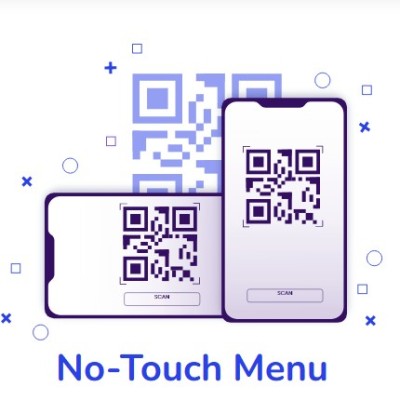Living with Generalized Anxiety Disorder (GAD) can feel like carrying an invisible weight every day. You might constantly worry about work, health, relationships, or everyday tasks—even when there’s no clear reason to feel anxious. GAD affects millions of people, but it’s often misunderstood or mistaken for simple stress. The good news? There are tools, therapies, and strategies that offer real hope for those navigating life with chronic anxiety.
In this article, we’ll explore what GAD is, how it overlaps with other anxiety disorders like Social Anxiety and Phobias, and the most effective methods to manage and reduce its grip on daily life.
What Is Generalized Anxiety Disorder?
Generalized Anxiety Disorder is characterized by persistent and excessive worry that interferes with daily activities. Unlike the occasional anxiety that everyone experiences, GAD is long-lasting—often lasting for months or even years.
Common Symptoms of GAD:
Restlessness or feeling “on edge”
Difficulty concentrating
Muscle tension
Irritability
Sleep disturbances
Fatigue
These symptoms may ebb and flow, but for those with GAD, anxiety becomes a part of everyday life rather than a temporary response to stress.
Causes and Risk Factors
The exact cause of GAD isn’t fully understood, but it’s likely a combination of genetic, biological, and environmental factors. People with a family history of anxiety disorders may be more prone, and certain life experiences—such as trauma, chronic stress, or substance abuse—can also increase the risk.
How GAD Intersects with Other Anxiety Disorders
People with GAD often experience symptoms that overlap with other types of anxiety disorders.
Social Anxiety
Social Anxiety involves an intense fear of social situations or being judged by others. It can make everyday interactions—like speaking in meetings or eating in public—overwhelming. While GAD is more generalized, someone with both disorders might worry about social events well in advance and still feel uneasy during and after them.
Phobias
Phobias are irrational fears of specific objects or situations—like heights, spiders, or flying. Though distinct from GAD, phobias can co-occur, compounding the stress someone feels day-to-day. For example, a person with GAD and a fear of driving may become consumed by worry about needing to drive anywhere.
Effective Tools for Managing GAD
The key to managing Generalized Anxiety Disorder lies in a combination of strategies—each reinforcing the other to help regain control and improve quality of life.
1. Cognitive Behavioral Therapy (CBT)
CBT is one of the most effective treatments for GAD. It focuses on identifying negative thought patterns and challenging them. For example, if someone constantly worries they’ll fail at work, CBT helps them evaluate the evidence and develop more realistic thinking.
2. Mindfulness and Meditation
Mindfulness teaches you to stay in the present moment instead of spiraling into “what if” scenarios. Regular meditation can reduce anxiety symptoms and improve focus and emotional regulation.
3. Medication
In some cases, medication may be necessary to manage symptoms. Common medications for GAD include:
SSRIs (like sertraline or fluoxetine)
SNRIs (like venlafaxine)
Benzodiazepines (short-term use only)
Medication is often used alongside therapy for optimal results.
4. Journaling
Writing down your thoughts can be a great outlet. It helps organize anxious thinking and identify triggers that lead to heightened anxiety.
5. Physical Activity
Exercise is a natural anxiety reducer. It releases endorphins, reduces muscle tension, and improves sleep—three things people with GAD often struggle with.
6. Healthy Routines
Having a structured daily routine helps reduce uncertainty. Regular sleep, balanced meals, and scheduled relaxation time provide stability.
7. Limit Stimulants
Caffeine, nicotine, and even sugar can increase symptoms of Generalized Anxiety Disorder. Reducing intake can significantly help manage physical symptoms like rapid heartbeat and jitteriness.
The Power of Therapy and Support
Talking to a professional can be life-changing. Whether it’s a therapist, psychologist, or counselor, professional support offers tools tailored to your specific needs.
Group therapy is another great option. Sharing experiences with others facing similar challenges helps reduce feelings of isolation and provides fresh perspectives on how to cope.
Family or couples therapy can also help educate loved ones about GAD and how they can be supportive without being enabling.
Building a Support Network
Having a reliable support network is crucial for managing GAD. This includes:
Trusted friends or family members
Online or local support groups
Mental health hotlines or forums
Letting people know what you’re going through can relieve some of the pressure to “keep it together” all the time.
Finding Hope and Progress
It’s important to remember that improvement is possible—even if you’ve struggled with anxiety for years. Many people with Generalized Anxiety Disorder go on to live fulfilling, productive lives. With the right mix of therapy, lifestyle changes, and support, symptoms can become manageable.
Relapses may happen, but they don't mean failure. They’re often just signals that you may need to adjust your approach or seek additional support. Celebrating small victories—like going a full day without excessive worry or handling a social event confidently—can build momentum.
When to Seek Help
If your anxiety is interfering with work, relationships, or daily functioning, it’s time to seek help. There’s no shame in needing support. Mental health is just as important as physical health, and investing in it leads to better outcomes across every area of life.
Here are signs you might benefit from professional help:
Your worry is constant and uncontrollable
You experience panic attacks or avoid activities due to fear
Anxiety impacts your physical health (e.g., digestive issues, headaches)
You feel hopeless or depressed in addition to anxious
Final Thoughts
Managing Generalized Anxiety Disorder doesn’t happen overnight, but with the right tools, support, and mindset, it is entirely possible. Understanding how GAD relates to other conditions like Social Anxiety and Phobias helps build a holistic strategy that addresses the full spectrum of your experiences.
Whether through therapy, medication, self-care, or community, you can find relief. Remember—you are not alone, and your anxiety does not define you. With hope and perseverance, better days are within reach.









